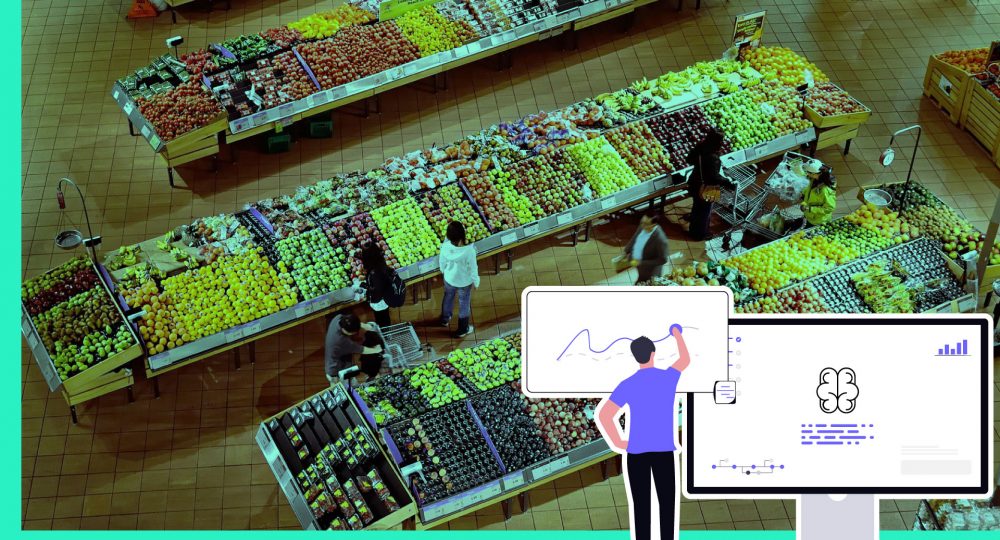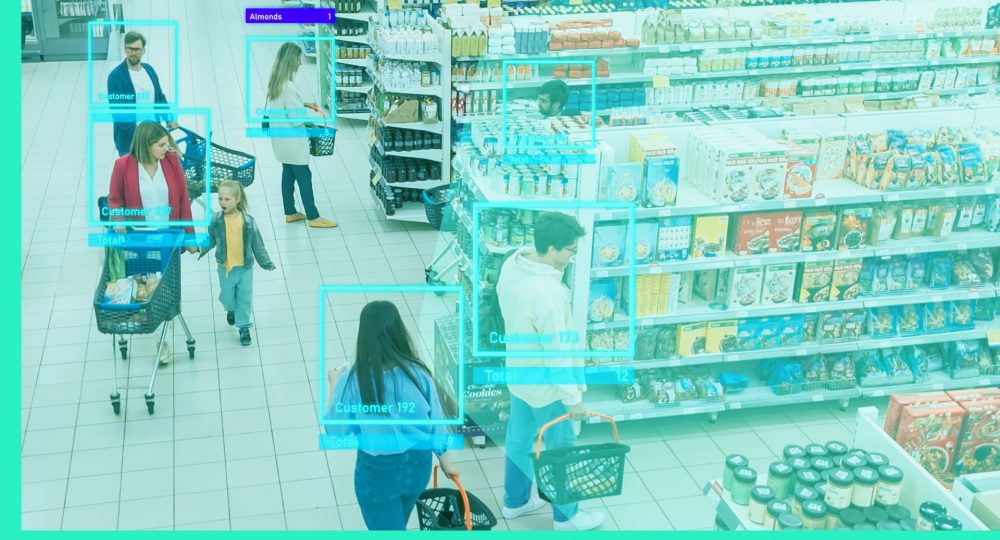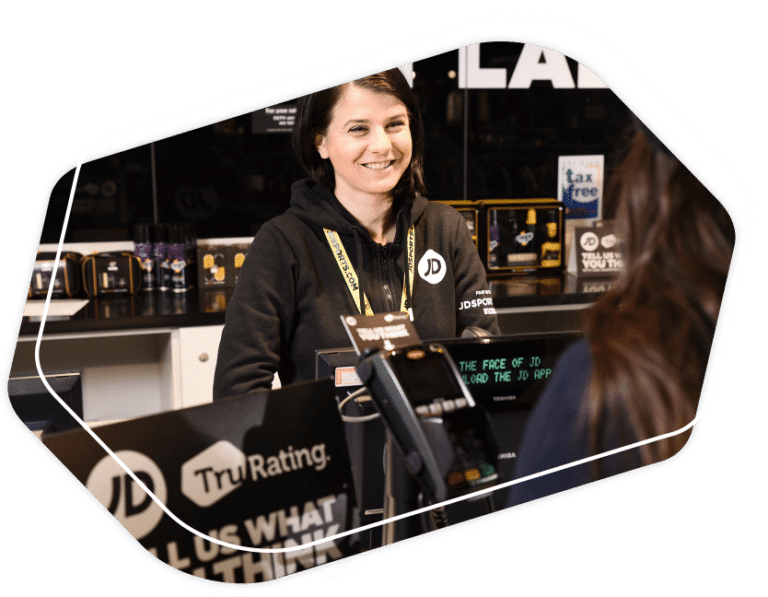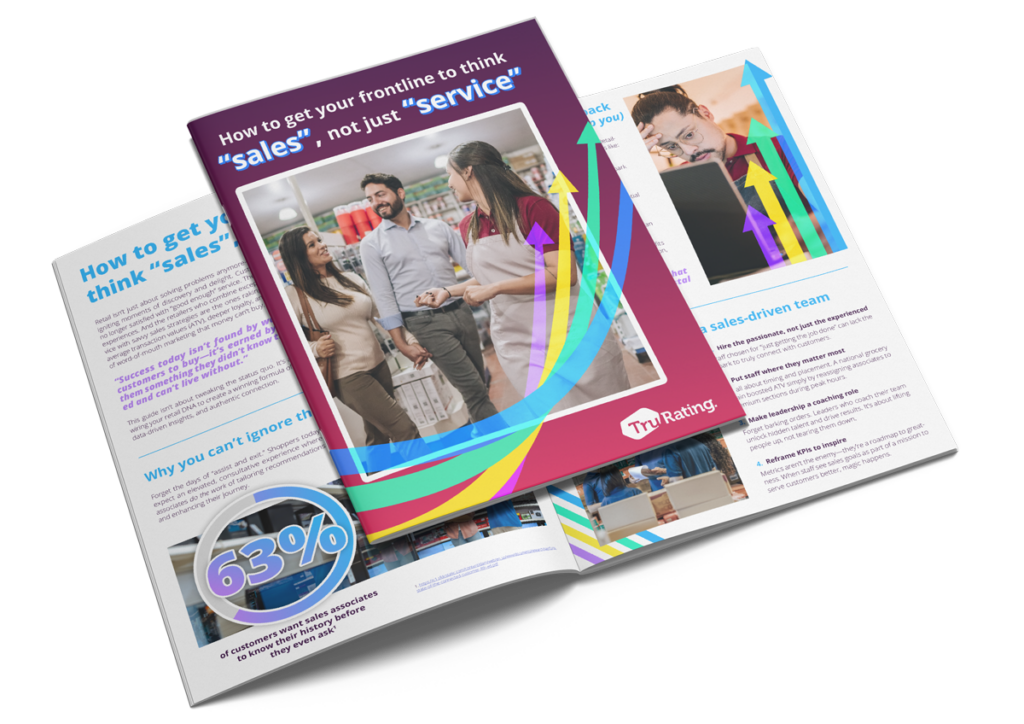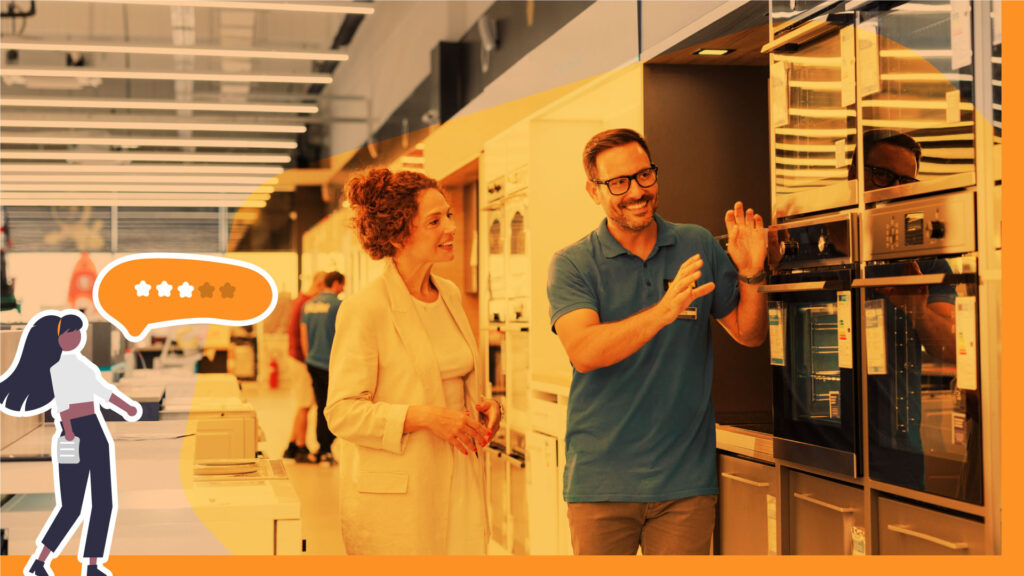
The retail customer experience has become one of the most powerful differentiators in the industry. Price and product still matter, but what truly defines success today is the quality of the customer experience in retail, both in-store and online. Shoppers don’t just buy products, they buy into experiences that are seamless, personal, and emotionally rewarding.
Retail leaders are asking the hard questions:
- What does a great in-store customer experience look like in 2025?
- How do we improve customer engagement in retail without overwhelming frontline teams?
- Which strategies actually move the needle on conversion, loyalty, and spend?
The answers go far beyond surface-level “retail CX tips.” They require a retail customer experience strategy that connects feedback, operations, and revenue impact. That’s why the best retailers are investing in customer experience retail solutions that provide real-time insights, validate initiatives, and deliver consistency across every store, shift, and region.
In this article, we’ll share 17 actionable strategies to improve customer experience in retail stores, from optimizing layouts and training staff to leveraging technology and building omnichannel journeys. Along the way, we’ll explore emerging customer experience trends in retail, contrast online and in-store experiences, and highlight how tools like TruRating’s retail customer experience platform help leaders turn feedback into measurable growth.
Download the Journey to Excellence in Customer Experience
How important is customer experience in retail?
According to research by Forrester, 72% of businesses say that customer experience is their main priority — and for good reason. Improving customer experience in retail stores doesn’t just boost satisfaction scores, it drives measurable business outcomes: higher conversion, repeat purchases, and increased customer lifetime value.
CX leaders know that customer experience in the retail industry isn’t just about service, it’s about aligning the brand promise with operational execution. From in-store customer experience to digital journeys, retailers must prove that every initiative resonates with customers.
The challenge? Many organizations still rely on lagging signals like promoter scores, complaints, or sales dips. These come too late to fix issues before they impact loyalty or revenue. The opportunity lies in building a retail customer experience strategy powered by real-time feedback and actionable insights.
What makes a good customer experience in retail?
A truly satisfying shopping experience is built on several pillars:
- Personalization – tailoring the shopping experience to individual preferences and needs.
- Convenience – making it easy for customers to find, purchase, and receive products or services.
- Consistency – providing a seamless experience across all touchpoints, whether online, in-store, or mobile.
- Engagement – building meaningful connections with customers through interactions and communication.
- Feedback – capturing and acting on retail customer feedback to continuously improve.
In short, the best retail customer experience blends operational excellence with emotional connection.
Ways to improve customer experience in retail
1. Optimizing retail store layout for a smooth flow
A well-organized store layout makes it easy for customers to navigate and find their needs. Strategic placements of high-demand products and visually engaging displays create a welcoming and functional environment. An optimized retail store layout makes shoppers feel more comfortable and confident, encouraging them to spend more time in-store. With clear pathways and intuitive zones, customers are more likely to complete a smooth shopping journey, reducing frustration and potentially increasing basket size. Take IKEA’s iconic “store maze”. It may be polarizing, but it’s carefully designed to maximize product exposure and create serendipitous discovery.
2. Invest in staff training to improve interactions
Frontline associates shape the customer shopper experience. By implementing a retail staff training program, you can improve customer engagement and ensure every interaction reflects a commitment to customer-centric retail service excellence. Well-trained staff handle queries efficiently and contribute to a positive shopping experience by providing tailored assistance. Continuous training keeps employees up to date with product knowledge and enhances their ability to offer personalized recommendations, resulting in stronger connections with customers.
The training you implement should go beyond product knowledge; it should focus on behaviors proven to lift sales. For example, TruRating data shows that simple actions like greeting customers or making a recommendation can increase retail conversion rates and ATV.
Learn more about retail store staff training.
3. Leverage new types of in-store technology
Adopting in-store technology innovations, such as interactive kiosks and mobile point-of-sale systems, simplifies shopping and creates a better retail store experience. These tools meet evolving customer expectations and provide memorable experiences. For instance, technology such as augmented reality displays can provide an immersive shopping experience and leave a lasting impression on shoppers. Embracing these technologies creates a more interactive and efficient retail environment, helping you stay competitive.
Discover the six innovations retailers are investing in.
4. Offer personalized shopping experiences
Tailored recommendations and exclusive offers create a personalized shopping experience that resonates with your audience, turning casual shoppers into loyal advocates. To achieve this, you can use the data collected through POS systems, retail customer experience software, loyalty programs, and tools like TruRating. Modern POS systems capture purchase history and preferences, while loyalty programs provide insights into customer habits and preferences. TruRating complements these efforts by gathering near real-time customer feedback, allowing you to refine your offerings and meet individual expectations. This data-driven approach ensures your personalization strategies are effective and meaningful, fostering a connection with your customers.
5. Reduce checkout time with self-checkouts
Nothing erodes a customer retail experience faster than long lines To address this issue, incorporating self-checkouts can streamline the checkout process. This not only meets customer expectations but also improves the overall customer experience in retail stores. However, self-checkouts have some drawbacks, such as an increased risk of theft and the loss of human interaction, which some customers value.
Explore the advantages and disadvantages of self-checkouts.
6. Engage customers with interactive displays
Interactive displays captivate shoppers and enhance their engagement. These technologies bring products to life, offering unique ways to communicate features, promotions, or even your brand story. With touchscreens, virtual try-ons, or product demos, customers can experience products in a more dynamic and exciting way. Interactive elements are visually appealing and create a memorable customer experience in retail stores that leaves a lasting impression, increasing the likelihood of repeat visits.
7. Create loyalty programs for retail customers
Strong loyalty programs extend the customer experience in retail stores into everyday life. Tailored perks and incentives drive customer retention and deepen connections between your brand and your audience. A well-structured loyalty program can include exclusive discounts, early access to sales, or even personalized gifts. These initiatives foster a sense of belonging and appreciation, turning occasional buyers into loyal advocates who champion your brand.
8. Prioritize retail store cleanliness and maintenance
A spotless and well-maintained store builds trust and creates a positive first impression. Cleanliness may sound basic, but it’s foundational to a positive retail customer experience. Customers are more likely to return to stores that are tidy, visually appealing, and free of clutter. Regular upkeep, from sanitization to refreshing the store layout, creates a more pleasant and professional atmosphere that can help improve the overall customer experience in store.
9. Incorporate omnichannel retail strategies
Modern retail customer experience trends demand integration, ensuring customers have a seamless experience across all touchpoints. For example, Target has connected its online platform with its in-store customer experience, by offering services such as same-day ordering, which allows shoppers to get dry and frozen groceries, alcohol, fresh produce and more in a four-minute drive-up pickup. These multi-touchpoint types of experiences offer more convenience to consumers and foster loyalty.
10. Analyze customer feedback for continuous improvement
Collecting and acting on customer feedback helps you uncover retail customer pain points and implement effective solutions. Tools like TruRating can provide valuable insights directly at the point of sale. Understanding customer preferences allows you to adapt quickly to meet their evolving needs, ensuring a better shopping experience with every visit. Feedback isn’t just data; it’s an opportunity to refine and elevate CX, and with an average of 80% response rate, TruRating can provide you with an overall picture of how your customers feel about your stores.
Learn more about our POS feedback solution.
11. Improve retail ambiance through visual merchandising strategies
Improving retail ambiance with thoughtfully curated displays, lighting, and décor can transform the shopping journey into a sensory delight. Visual merchandising strategies can help improve customer experience in retail stores. Take Anthropologie as an example. Known for its captivating window displays and immersive in-store setups, the brand curates its retail experiences to reflect a lifestyle that resonates with its customers. From carefully styled furniture arrangements to artful product presentations, every element is designed to inspire shoppers and create a unique, aspirational shopping experience.
12. Maintain optimal inventory management
Stockouts damage the customer experience in retail stores and silently erode loyalty. Effective inventory management minimizes out-of-stock scenarios, helping you consistently meet customer expectations. Shoppers appreciate stores where they can easily find their desired items, and smooth inventory practices reduce frustration and increase overall satisfaction. Real-time tracking and predictive analytics further streamline the process, ensuring a seamless experience.
Gain deeper insights into predictive analytics in retail.
13. Provide staff with customer service scripts
Poor customer service costs businesses $75 billion each year. Structured scripts ensure consistency in customer service in retail stores, ultimately enhancing customer satisfaction. Scripts enable employees to communicate effectively and confidently, allowing them to manage routine and complex inquiries. When staff members feel empowered, they deliver superior service, offering personalized support that surpasses customer expectations and creates memorable experiences.
14. Focus on retail store branding
Your retail store branding should reflect your company’s identity, from the design of the space to the uniforms your staff wear. Disney stores focus on immersive retail customer engagement by providing themed experiences that align with their brand magic. Consistent visual and messaging elements throughout your store can create a cohesive experience that resonates with customers, making them more likely to connect emotionally with your brand.
15. Learn from shopper behavior analysis
Understanding shopper behavior is essential for creating a smooth and enjoyable experience in retail stores. By analyzing how customers navigate the store, which products attract their attention, and where they spend the most time, you can identify opportunities to improve the customer experience. Analyzing shopper behavior helps you identify layout bottlenecks, discover popular product trends, and evaluate the effectiveness of your marketing and merchandising strategies.
A great example of leveraging shopper behavior analysis is IKEA. IKEA employs in-depth studies of how customers move through their stores, including which areas they spend the most time in and which product displays drive engagement. By analyzing this behavior, IKEA has perfected its “store maze” layout to encourage customers to explore every section and discover products they didn’t know they needed.
Book a demo today to learn how to use TruRating’s customer feedback data to perform a shopper behavior analysis.
16. Keep up with retail marketing strategies
From TikTok campaigns to seasonal activations, marketing must tie back to customer engagement in retail stores. Staying on top of retail marketing strategies ensures your promotions resonate with your target audience. Seasonal campaigns, social media tie-ins, and email marketing are excellent tools to drive traffic and engagement. Consistent, targeted marketing builds brand awareness and drives long-term loyalty, ensuring that customers are engaged at every touchpoint of their shopping journey.
17. Position your brand as a sustainability leader
Sustainability is a rising retail customer experience trend. Brands like Patagonia resonate with environmentally aware consumers by highlighting their commitment to sustainable practices. Similarly, The Body Shop attracts eco-conscious customers by promoting their Fair Trade ingredients and sustainable sourcing efforts. Your brand can attract eco-friendly customers and improve customer engagement by emphasising sustainable initiatives.
Online vs. in-store customer experience
The retail complex customer experience extends across both physical and digital environments. Improving customer experience online requires intuitive navigation, mobile optimization, fast shipping, and proactive support. But the real opportunity lies in how online engagement influences in-store customer experience.
For example, a specialist retailer we work with wanted to understand whether digital activity influenced in-store purchases. So they asked customers at checkout:
“Did you visit our website before purchasing today?”
The results were striking:
- Those who said no spent $72 less than average.
- Those who said yes spent $45 more.
That’s a $117 swing in spendm driven purely by online engagement.
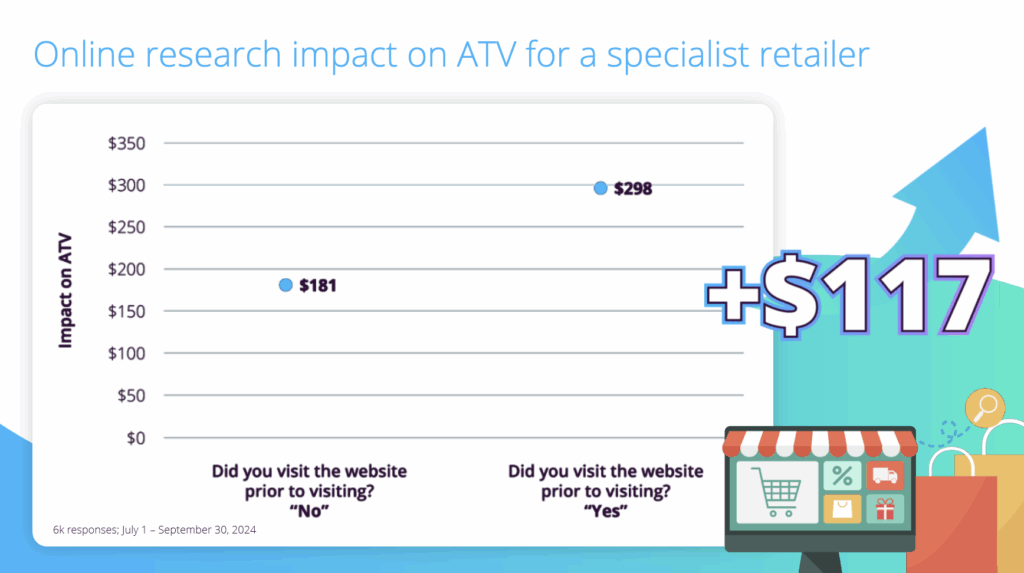
This reframes the conversation. The real question isn’t just “did the website convert?” but “did it influence?” If your digital experience inspires someone to visit a store and spend more, that’s a massive revenue opportunity. And if your digital team is focused only on online conversion metrics, they could be missing the bigger prize: higher-value in-store purchases.
Retailers who win at this treat online and offline as one connected customer retail experience, not separate silos. By linking behaviors and feedback across touchpoints, they uncover how digital engagement drives in-store performance, creating a seamless, satisfying shopping experience.
Improve customer experience in retail stores with TruRating
Delivering the best retail customer experience isn’t just about ideas, it’s about execution. CX and store ops teams often face the same frustrations:
- Feedback arrives too late to act
- Rollouts stall because pilots lack customer validation
- Inconsistency across stores erodes brand trust
This is where TruRating’s retail customer experience platform makes the difference. By capturing real-time feedback directly at checkout, with response rates up to 80%, retailers can:
- Detect experience risk early before sales or loyalty decline
- Link frontline behaviors to revenue (e.g., greetings, recommendations)
- Ensure execution consistency across stores, shifts, and regions
- Validate initiatives quickly, de-risking rollouts before scaling
For CX teams, this means proving ROI and elevating influence beyond dashboards. For store operations, it means moving from firefighting to proactive coaching and performance management.
In other words, we don’t just measure customer sentiment, we turn retail customer experience management into a performance engine that drives conversion, ATV, and loyalty. Retailers finally have a retail customer experience solution that connects customer feedback directly to business performance, helping leaders deliver experiences that customers love and CFOs respect.
If you’re looking for more tips, our retail CX guide introduces more data-driven approaches that top retailers use to measure, analyze, and optimize customer experience.
Download the Journey to Excellence in Customer Experience
Ready to unlock your stores’ full potential? Book a demo today and discover how to transform your customer experience strategy.



